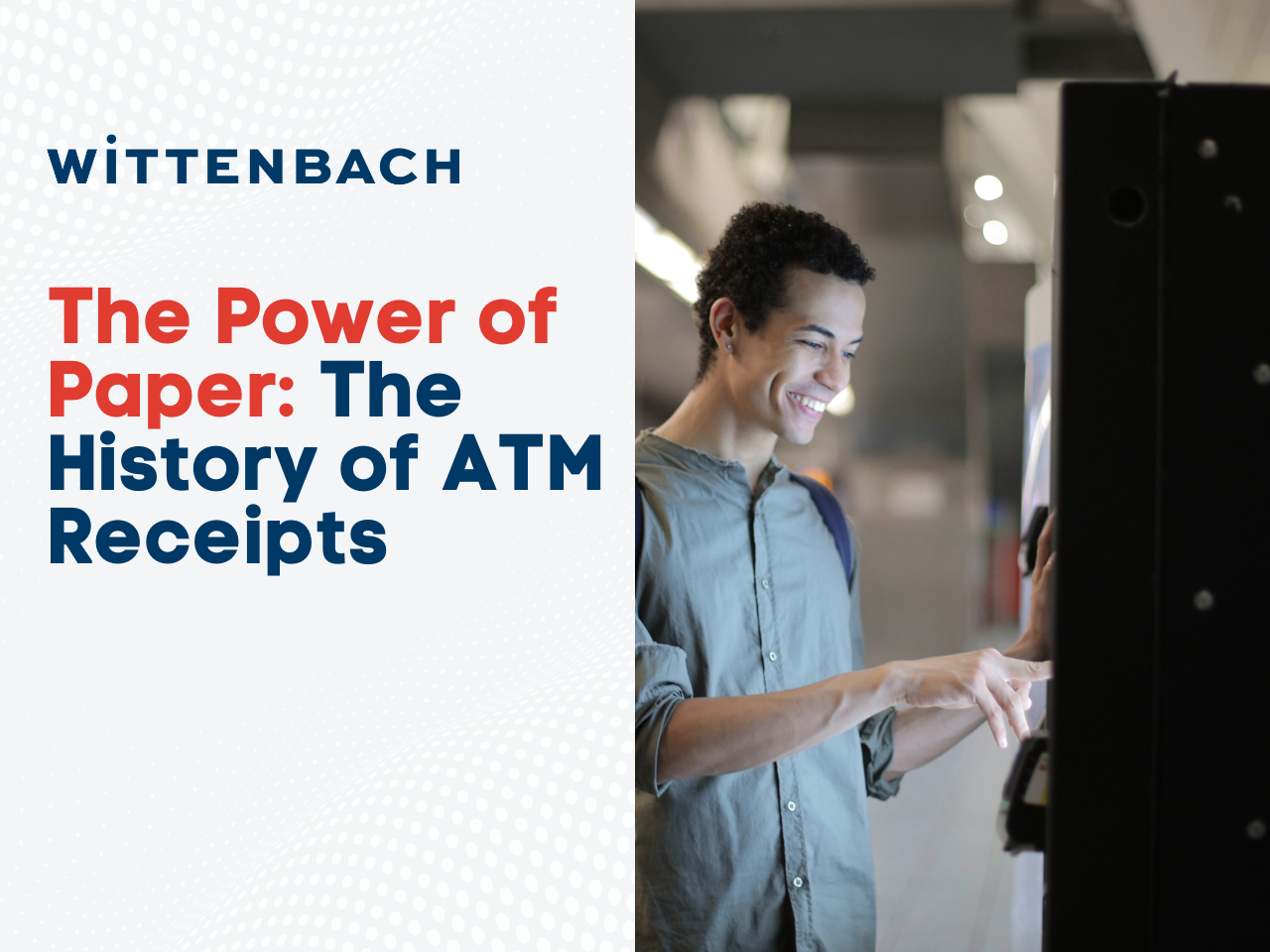In previous blogs, we have spoken about the importance of your ATM (Automated Teller Machine) to you brand image. The ATM is an extension of your customer service team and needs to be user friendly. Not having paper for the receipts can make your customer feel like something is missing, because other ATMs have this all-important parting gift. It can leave a negative brand image with your customer.
There are several reasons why they might want to receive an ATM receipt. One common reason is to keep track of account balances and recent transactions. The receipt can provide a record of the amount of money withdrawn or deposited, as well as any fees that may have been charged. Additionally, some people like to keep their receipts for budgeting purposes or to reconcile their bank statements. Without the receipt your customer may feel a bit uneasy. They might question if a transaction was recorded.
Let’s take a deep dive into what makes this paper so powerful.
The History of ATM Receipts
The history of ATM paper receipts dates back to the early days of ATMs and the evolution of banking technology. Here’s a brief overview:
- Early ATM Usage: The first ATM was introduced by Barclays Bank in London in 1967. This machine allowed customers to withdraw a fixed amount of money using a special paper check. However, it did not provide paper receipts as we know them today.
- Introduction of Paper Receipts: The concept of providing paper receipts alongside ATM transactions started to gain traction in the 1970s as ATMs became more widespread. These early receipts were often simple and printed basic transaction details.
- Advancements in Printing Technology: As printing technology improved, so did the quality and complexity of ATM receipts. By the 1980s, ATMs were capable of printing more detailed receipts that included information like account balances, transaction timestamps, and even the last few transactions.
- Enhanced Transaction Information: As banking systems became more sophisticated, ATM receipts began to display additional information, such as the location of the ATM, the name of the bank, and contact information for customer support.
- Security and Privacy: With the rise of identity theft and concerns about sensitive information being left behind at ATMs, there was a growing emphasis on ensuring that ATM receipts did not display the full account number to enhance security and privacy. Many receipts began truncating the account number, showing only the last few digits.
- Digital Alternatives: As digital banking became more popular, many banks started offering digital receipts as an alternative to paper ones. These could be emailed or accessed through online banking platforms.
- Environmental Concerns: In recent years, there has been a push toward reducing paper usage due to environmental concerns. Some banks have started offering customers the option to opt out of receiving paper receipts, promoting digital receipts instead.
- Modern ATM Receipts: Today’s ATM receipts have evolved to provide a balance between essential transaction information and ensuring customer privacy. They typically include transaction details, account balances, truncated account numbers, and sometimes QR codes for easier reference.
It’s important to note that the history of ATM paper receipts has been influenced by various factors, including technological advancements, customer preferences, security concerns, and environmental considerations. As banking technology continues to evolve, we can expect further changes in how ATM receipts are generated and delivered to customers.
Types of receipt paper
There are two types of ATM receipt paper: bond and thermal paper. Bond paper is a high-quality paper that is commonly used for printing documents such as letters, reports, and invoices. It is made from wood pulp and has a smooth finish, which makes it ideal for writing or printing. Printing is done by a ribbon, like a typewriter, or by ink cartridges, similar to your office printer.
On the other hand, thermal paper is a special type of paper that is coated with a chemical that changes color when exposed to heat. BPA, or bisphenol A, is a chemical compound that has been used in the production of certain types of thermal paper. However, it is important to note that BPA has been found to have potential health risks, and many manufacturers have started to phase it out of their products. Thermal paper that is BPA-free is now widely available in the market. It is commonly used in applications such as cash registers, credit card terminals, and ATMs. When heat is applied to the thermal paper, it creates an image or text without the need for ink or toner.
One of the main differences between bond paper and thermal paper is the printing method. Bond paper requires ink or toner to create an image or text, while thermal paper relies on heat to produce the desired result. Additionally, bond paper is generally more durable and long-lasting, while thermal paper tends to fade over time.
It’s important to note that thermal paper is sensitive to heat and light, so it should be stored in a cool, dark place to maintain its quality. A thermal paper has a shelf life and needs to be replaced more often. Bond paper, on the other hand, is not as sensitive to environmental conditions. It does not typically contain BPA as has become a preferred paper for ATMs.
The challenges we face
Obsoletism or planned obsolescence can become a challenge when buying supplies for aging equipment. ATMs are no different. As your fleet of ATMs age, the supplies will become harder to find. This goes true for ribbons and thermal papers that are just not heavily used anymore.
Here is a specific example: Do you have an NCR SelfServ ATM that prints on two sides of the paper receipt? The paper for this specific ATM has been discontinued. What can you do? Where do you source it?
We have found a solution. Wittenbach offers a single-sided paper in our Webshop! Item # N019448 is just as good as the double-sided solution. It has been proven to work in your ATM by our many customers who made the transition. This thermal paper on a roll is BPA free and comes 4 rolls to a case. Free shipping on 25 cases or more.
Wittenbach
Look to Wittenbach when you need specific financial supplies. Our comprehensive Webshop is coveted by many resellers, so we know our prices are the best. If you cannot find it on our website, just email [email protected] and we will source it for you. Your end user will be grateful.

